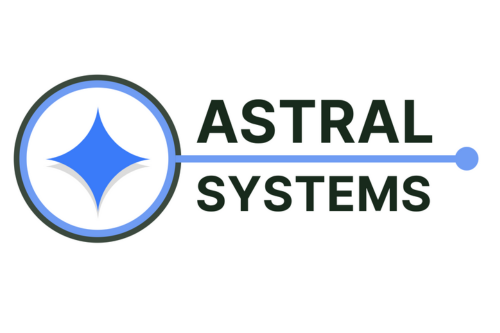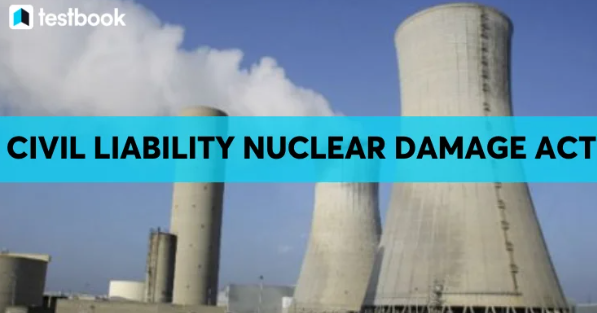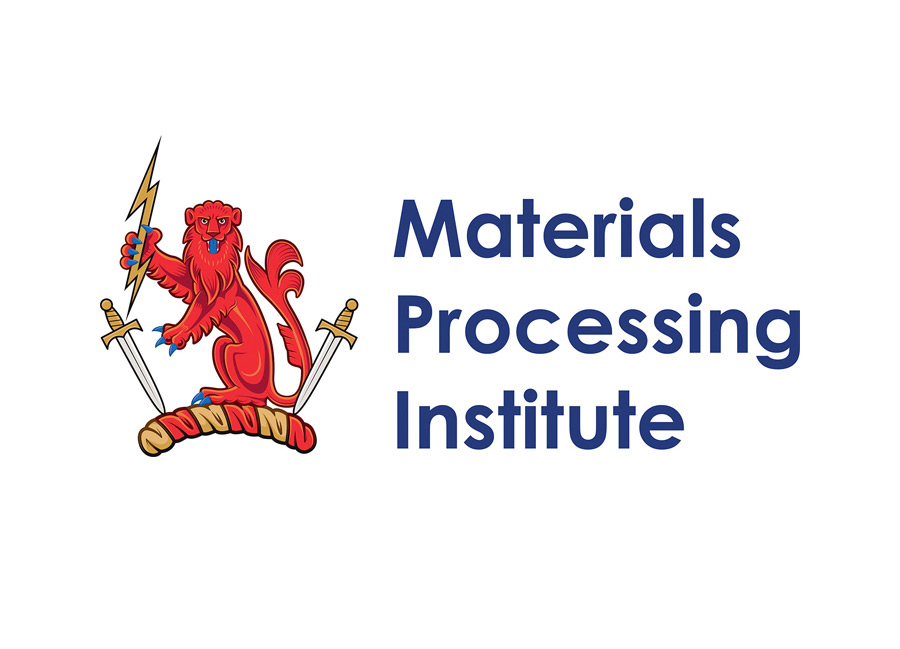As cancer rates in the developed nations rise due to lifestyle and environmental pollution, so does the need for the nuclear isotopes used in detecting those cancers in a medical setting. But with many reactors built in the Seventies and Eighties being scheduled for shutdown and decommissioning, the nuclear isotopes used in medicine are becoming rarer and more expensive. Now, a startup from Bristol, U.K. hopes to increase production of these nuclear isotopes by using a new, radical, technology.
Talmon Firestone and Dr. Tom Wallace-Smith co-founded Astral Systems. They plan to utilize something called multistate fusion (MSF) technology in its “compact reactors.” This will enable an increase in the supply of nuclear isotopes used in modern medicine. These reactors are so compact that they could fit on the average desk.
Astral Systems has now closed over a four million fifty-seven-thousand-dollar investment led by Austria-based VC Speedinvest and U.K.-based Playfair. The company says that its approach will commercialize MSF technology, achieving better performance with greater efficiency and lower cost than traditional nuclear power reactors.
The approach employs what is referred to as lattice confinement fusion (LCF). This concept was first discovered by NASA. It can achieve solid-state fuel densities that are four hundred million times higher than those achievable normally, according to the company.
Astral Systems has developed and demonstrated the first of its kind multi-state fusion device. It enables orders of magnitude improved fusion rates on a reactor architecture that utilizes a quarter century of engineering design.
Leveraging earlier research from NASA, Astral Systems also claims that its platform could lead to other applications such as safe hybrid nuclear energy, space exploration, and industrial and security industry applications.
Astral Systems reactors can support a wide variety of medical, industrial, and research applications well before any fusion plant is plugged into the grid. The company is developing innovative system designs to address global challenges such as those in health access and zero carbon energy.
Astral Systems’ co-founder and CTO, Dr. Tom Wallace-Smith said in an interview, “The whole industry has been constrained of supply constraint historically because of reliance on centralized reactors.”
Wallace-Smith added, “Whereas what we’re proposing is placing them in industrial units or in the basement of hospitals or production centers. We can then produce the drugs exactly where they needed, and be able to reduce the reliance on these centralized production sites.”
Wallace-Smith believes that its competitors are constrained by existing technology. He said, “Most other approaches are based on linear, accelerated technology, whereas what we’re doing is essentially taking a very high TRL core architecture and putting in 2020 physics, where the ceiling is quite high in terms of performance. So we’re just at the start of what’s achievable with this.”
Rick Hao is a partner at Speedinvest. He said in a statement, “Astral Systems represents the best of U.K. deeptech. Astral is delivering a fresh approach to nuclear fusion that addresses urgent medical, industrial and power needs.” So far Astral has constructed three commercial fusion facilities from which it’s already generating revenues.
Also participating in the recent funding round were angel investors including Oliver Buck, founder of ITM Isotope Technologies, and Pete Hutton, former ARM president of Product Group.
Astral Systems
Blog
-

Nuclear Fusion 111 – Astral Systems Working On Lattice Confinement Fusion To Produce Radioactive Isotopes For Medical Applications
-
Nuclear News Roundup Feb 14, 2025
NANO Nuclear Energy Strengthens Intellectual Property Portfolio with Four New Patent Applications Updated globenews.com
3 of TVA’s nuclear reactors offline, no rate impact expected wbir.com
Tennessee governor pledges support for nuclear projects world-nuclear-news.org
IAEA to Host International Symposium on AI and Nuclear Energy in December iaea.org
-

Geiger Readings for Feb 14, 2025
Ambient office = 71 nanosieverts per hour
Ambient outside = 143 nanosieverts per hour
Soil exposed to rain water = 162 nanosieverts per hour
Green onion from Central Market = 106 nanosieverts per hour
Tap water = 119 nanosieverts per hour
Filter water = 103 nanosieverts per hour
-

Nuclear Reactors 1478 – India Is Working On Major Expansion Of Nuclear Power – Part 2 of 2 Parts
Part 2 of 2 Parts (Please read Part 1 first)
India alone plans to bring onstream an additional fourteen gigawatts of conventional nuclear capacity by 2032. By 2033, India wants to build five indigenously developed small modular reactors. These could fill niche power requirements although their contribution to total power generation would be modest.
India’s nuclear power industry is now being opened up to private-sector capital both at home and from abroad.
India paved the way for a nuclear energy partnership with the U.S. in a landmark deal twenty years ago. The two countries agreed in 2019 to build six U.S. nuclear power plants in India.
Those power plants never got built, in part due to issues surrounding India’s liability law. However, the U.S. government has recently begun removing roadblocks to forge deeper energy ties with New Delhi.
On the domestic front, Indian major utility companies including Tata Power, Vedanta, Reliance Industries have already held preliminary talks.
There is a lot of ground for nuclear power to make up in India, however, and it may remain below its targets into the next decade. India needs to more than double its non-fossil fuel capacity to achieve its aim of five hundred gigawatts of clean electricity capacity by 2030, from the current two hundred and eight gigawatts.
The drive into renewables such as solar and wind power is losing steam, however, due in large part to concerns about reliability and a lack of battery storage. This puts even more pressure on the expansion of nuclear power. Solar power output last year grew at its slowest pace since India made international commitments to fight climate change in 2015, while annual wind power output fell for the first time since 2020.
Indian Prime Minister Narendra Modi took to social media platform X after local election results showed his party regained power in the nation’s capital for the first time in twenty-seven years. He said, “It is our guarantee that we will leave no stone unturned in developing Delhi, improving the overall quality of life for the people.”
Modi’s Bharatiya Janata Party and its key opponent, the Aam Aadmi Party, had both promised large cash grants in the election campaign.
The BJP proposed monthly payments of twenty-eight dollars to underprivileged women in the Delhi area and a one-time payment of two hundred and forty-two dollars to every pregnant woman, among other giveaways.
India’s central bank cut rates last week for the first time in nearly five years but signaled it would take a data-driven position on any future moves.
Global uncertainty prevented the Reserve Bank of India from changing its position to “accommodative” from “neutral”, Governor Sanjay Malhotra said in his policy review last week. Malhotra said that the central bank would remain “agile” in providing adequate liquidity to the banking sector and was not aiming for a specific rate for the rupee.
Bharatiya Janata Party -
Nuclear News Roundup Feb 13, 2025
Swiss Nuclear Utility Signs Uranium Contract With Kazakhstan In Move Away From Russia nucnet.org
Croatia to study potential locations for new nuclear capacity world-nuclear-news.org
Reactor pressure vessel delivered for Lianjiang 1 world-nuclear-news.org
Kärnfull Next progresses with Swedish SMR project world-nuclear-news.org
-

Geiger Readings for Feb 13, 2025
Ambient office = 93 nanosieverts per hour
Ambient outside = 121 nanosieverts per hour
Soil exposed to rain water = 16 nanosieverts per hour
Ginger root from Central Market = 95 nanosieverts per hour
Tap water = 70 nanosieverts per hour
Filter water = 66 nanosieverts per hour
-

Nuclear Reactors 1477 – India Is Working On Major Expansion Of Nuclear Power – Part 1 of 2 Parts
Part 1 of 2 Parts
India has talked for decades about making nuclear power a centerpiece of its energy strategy but has made little real progress to date. This year’s federal budget tackled some of the thorniest issues standing in the way of nuclear power expansion. Is nuclear power finally going to get its moment in the world’s most populous nation?
Narendra Modi’s political party won local elections that put it in charge of India’s national capital region for the first time in twenty-seven years. Modi is now the Prime Minister.
India enacted the stringent Civil Liability for Nuclear Damage Act (CLNDA) in 2010 to provide a quick compensation mechanism for victims of a nuclear accident. The Act establishes a strict and no-fault liability for nuclear plant operators. This means that they are liable for damage regardless of fault. However, the operator of the nuclear installation, after paying compensation for nuclear damage shall have the right to recourse if the nuclear incident was caused by the act of a supplier or his employee, which includes supply of equipment or material with patent or latent defects or sub-standard services. Recourse is also available if the nuclear incident has resulted from the act of commission or omission of an individual done with the intent to cause nuclear damage.
The nuclear operator had to maintain a financial security to cover its maximum liability of one hundred and eighty million dollars for civil nuclear damage and the operator had to cover liability through insurance or other financial security.
In case the damage claims exceeded one hundred and eighty million dollars, the gap would be bridged by the Central Government. The government liability amounted to about two hundred and seventy-seven million dollars.
India breathed new life into its decades-old nuclear power ambitions this month when its annual budget proposed amending the stringent liability laws detailed above to permit private investment in the sector – including from foreign companies.
Prime Minister Narendra Modi is expected to discuss nuclear investments by U.S. companies in his meeting with President Donald Trump this week. This is part of a likely packed agenda covering tariffs, arms sales and Indian deportees from the U.S.
India is the world’s fastest-growing major economy and third-largest greenhouse gas emitter. India has said it wants to meet its power needs and carbon reduction targets in part by expanding nuclear power capacity to one hundred gigawatts over the next twenty years, more than twelves times the current eight GW.
However, India’s drive for nuclear power, repeatedly blocked over the years by legal hurdles and a lack of investment, still faces some politically difficult legislative wrangling, as well as the potential for public protests, which have erupted in the past.
Energy think-tank Ember said, “This goal will require significant legislative reforms, particularly to enable private-sector participation through amendments to the Atomic Energy Act and the Civil Liability for Nuclear Damage Act.”
India’s nuclear push coincides with a global realignment of carbon reduction strategies. The number of nuclear projects under construction globally is approaching its highest in thirty years with more than forty countries including Indonesia and the Philippines planning to start or expand nuclear power generation.
Civil Liability for Nuclear Damage Act
Please read Part 2 next -
Nuclear News Roundup Feb 12, 2025
Meet the Disabled Vets, Cancer Researchers, and Nuclear Techs Fired by Elon Musk slate.com
South Africa open to Iran, Russia nuclear tech deals semafor.com
Kaptur, Murray Demand Briefing to Congress on Reckless Layoffs Across Department of Energy, Including NNSA, Jeopardizing National Security democrats-appropriations.house.gov
Nuclear, renewables designated as Japan’s main carbon-free energy English.kyodonews.net
-

Geiger Readings for Feb 12, 2025
Ambient office = 100 nanosieverts per hour
Ambient outside = 79 nanosieverts per hour
Soil exposed to rain water = 100 nanosieverts per hour
English cucumber from Central Market = 115 nanosieverts per hour
Tap water = 93 nanosieverts per hour
Filter water = 80 nanosieverts per hour
-

Nuclear Fusion 110 – U.K. Atomic Energy Authority Develops New Steel Alloy To Withstand Conditions Inside A Nuclear Fusion Reactor
A breakthrough in high-performance steel could remove one of the biggest obstacles to fusion energy which would bring the dream of unlimited clean power one step closer to reality.
Scientists at the U.K. Atomic Energy Authority (UKAEA) have succeeded in producing fusion-grade steel on a large scale. This is a major step toward making nuclear fusion a practical, cost-effective energy source.
One of the most serious challenges in getting fusion energy to work is to find materials that can survive the extreme heat and radiation inside a nuclear fusion reactor. Scientists at UKAEA’s Neurone consortium have developed a new type of steel alloy that can take temperatures up to twelve hundred degrees Fahrenheit and withstand heavy neutron exposure.
The new steel alloy is called fusion-grade Reduced-Activation Ferritic-Martensitic (RAFM) steel, a specialized material built for fusion reactors. This breakthrough, when produced at an industrial scale, could cut production costs by up to ten times. Lower costs are one of the keys to making fusion power plants commercially viable and speeding up their development. This could eventually stabilize energy prices and be affordable for consumers, particularly in regions where traditional energy infrastructure is expensive to maintain.
The Neurone consortium, a fifteen-million-dollar initiative, produced five- and one-half tons of fusion-grade steel using a seven-ton electric arc furnace at the U.K.’s Materials Processing Institute. This is the first time RAFM steel has been produced on such a big scale. It indicates that existing industrial facilities can handle making materials for fusion energy.
Dr. David Bowden leads materials science at UKAEA. He said in a UKAEA press release, “One of the major challenges for delivering fusion energy is developing structural materials able to withstand the extreme temperatures (at least up to twelve hundred degrees Fahrenheit) and high neutron loads required by future fusion powerplants.”
Fusion energy may not be lighting up homes just yet, but this new steel alloy could begin being tested in prototype fusion reactors within the next decade, according to UKAEA. If the steel survives testing and works for constructing nuclear fusion reactors, in the next twenty to thirty years, fusion energy could go commercial and potentially transform businesses, factories, and entire cities with a constant, carbon-free power source that doesn’t depend on dirty energy.
Fusion power is often referred to as the ultimate clean energy source because it could provide endless electricity without pollution or the long-term radioactive waste that comes with traditional nuclear power.
For fusion energy to really take off, it will have to fit into existing power grids alongside other clean energy technology. Improved energy storage, like next-generation batteries and hydrogen fuel, could help smooth out power from fusion reactors and keep the grid stable and efficient.
At the same time, big industries are looking for ways to reduce their carbon output with electrification and carbon capture. Fusion could change the way industries operate in this transition by providing a steady and reliable clean energy source.
UKAEA and its Neurone consortium are moving fusion energy closer to reality. With breakthroughs like next-generation steel alloys addressing key technical challenges, the possibility of unlimited, pollution-free power is nearly here.
Materials Processing Institute
